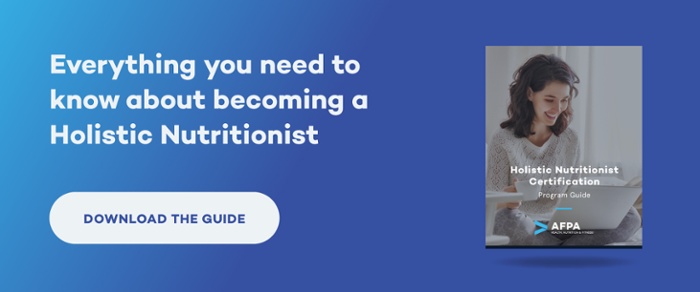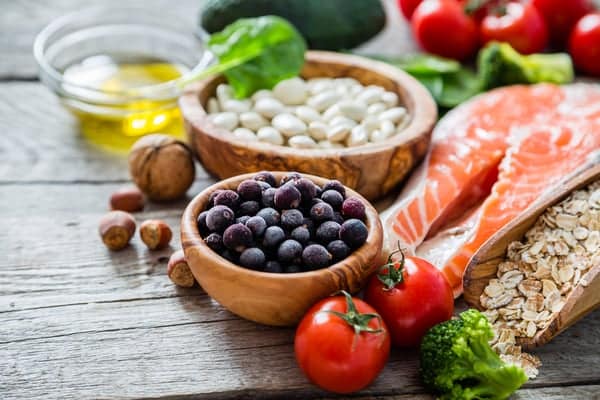Every year, over 10 million people die of hunger and diseases related to hunger worldwide.
Before the coronavirus pandemic, more than 35 million people faced hunger in the US. This figure includes 10 million children.
Over one year into the coronavirus pandemic, more than 42 million people in the US, including 13 million children, may be experiencing food insecurity, resulting in limited or uncertain access to enough food to support a healthy life.
Food security is a vital social determinant of health—one of the many factors over which people have limited or no control but have a significant impact on their overall health and wellness.
Understanding food security can help you become more sensitive to your client’s needs and adapt your services accordingly so you can offer support where appropriate.
Definitions of food and nutrition security have been developed for policymakers and government agencies, which is a missed opportunity for impact and sensibility for health professionals like physicians and health coaches. In this article, we frame the research around food and nutrition security as it is relevant for health and wellness coaches and other health professionals that work with individuals and small groups.

Learn How to Become a Certified Holistic Nutritionist in Less Than 6 Months
What Is Food and Nutrition Security?
In 2012, the United Nations’ Food and Agriculture Organization (FAO) proposed a Food and Nutrition Security (FNS) definition, which is used the most worldwide.
Food and nutrition security exists when all people at all times have physical, social and economic access to food, which is consumed in sufficient quantity and quality to meet their dietary needs and food preferences, and is supported by an environment of adequate sanitation, health services and care, allowing for a healthy and active life.
It is important to note that the FAO has historically separated the terms food security and nutrition security. Nutrition security considers the care, health, and hygiene practices of eating that can affect nutrient absorption in addition to the actual nutritional composition of the diet.
In fact, the United States USDA only uses the term “food security” and only in contrast to the definition of food insecurity. The term “nutrition security” in US agencies is almost never used. Experts agree that they are intimately related but separate concepts with differing strategies.
The USDA’s definition of food insecurity is as follows.
Food insecurity is a household-level economic and social condition of limited or uncertain availability of adequate food.
The USDA’s definition is based on what is assessed in the food security survey and what is represented in the USDA food security reports. The term “food adequacy” is an all-encompassing statement that refers to nutritional adequacy, cultural adequacy, and safety. Unless you have the USDA survey in front of you, it’s difficult to know exactly what being “food insecure” means.
It is important to note that hunger is different from food insecurity.
Hunger is an individual-level physiological condition that may result from food insecurity.
Food insecurity is experienced on a household level, while hunger is felt on an individual level. You may feel hungry because you were working late, have a greater appetite than you packed your lunch for, or in the moments before eating your next meal. These experiences of hunger are not due to food insecurity. If you feel hungry because you are unable to buy, produce, or physically access food, this is hunger due to food insecurity.
Some of the main indicators measured in the USDA food security survey are:
- Worried food would run out
- Food bought did not last
- Could not afford a balanced meal
- Cut the size of a meal or skipped a meal
- Cut or skipped a meal in 3+ months
- Ate less than felt they should
- Hungry but did not eat
- Lost weight
- Did not eat the whole day
Policymakers, researchers, and people in charge of program design observed that the lack of consistency regarding the definitions and use of food security and nutrition security was problematic and has led to complications in cross-country strategies and measurement. In 2012, the UN’s Standing Committee on Nutrition proposed uniting the two terms under the definition above, but the US doesn’t generally utilize this definition for measurement and policy-making purposes.
The Relationship Between Food Security and Nutrition Security
Just as the food we eat affects our nutrition, food security and nutrition security are directly related. In fact, researchers and policymakers have argued that a focus on nutrition needs to be embedded in all of the pillars of food security which we discuss in detail below.
How Is a Household’s Food Security Status Determined?
Food security is generally measured on the household level, with households defined as a group that considers themselves a unit.
In the US, a household’s food security status is determined by a range of severity within a scale, which is simplified in a set of four categories: food secure, food insecure without hunger, food insecure with moderate hunger, and food insecure with severe hunger.
The categories are defined as follows:
- Food secure — Households show no or minimal evidence of food insecurity.
- Food insecure without hunger — Food insecurity is evident in household members’ concerns about the adequacy of the household food supply and in adjustments to household food management, including reduced quality of food and increased unusual coping patterns. Little or no reduction in members’ food intake is reported.
- Food insecure with hunger (moderate) — Food intake for adults in the household has been reduced to the extent that implies that adults have repeatedly experienced the physical sensation of hunger. In most (but not all) food-insecure households with children, such reductions are not observed at this stage for children.
- Food insecure with hunger (severe) — At this level, all households with children have reduced the children’s food intake to an extent indicating that the children have experienced hunger. For some other households with children, this already has occurred at an earlier stage of severity. Adults in households with and without children have repeatedly experienced more extensive reductions in food intake.
Researchers have highlighted some of the weaknesses for how food security is currently being measured in the US, including difficulties measuring the impacts of short-term shocks like floods or earthquakes, a lack of measurement of how household behaviors shift depending on the severity and frequency of food insecurity, and an assumption that food insecurity experiences are similar across households.
Food Security as a Social Determinant of Health
Access to nutritious, safe, and culturally adequate food, or food and nutrition security, is a social determinant of health. The World Health Organization defines the social determinants of health as “the conditions in which people are born, live, work, and age, and the fundamental drivers of these conditions.”
Individuals and households have no control over the social determinants of health. Instead, people have to navigate their circumstances to survive and thrive. Even if households aren’t currently experiencing food insecurity, past food insecurity, especially during childhood and adolescence, may have a physical and mental impact on individuals throughout their life.
Under the Healthy People 2030 initiative, the USDA has grouped social determinants of health into five key domains:
- Economic stability
- Education access and quality
- Health care access and quality
- Neighborhood and build environment
- Social and community context
Food security falls under the domain of economic stability. Food insecurity, from the USDA perspective, is primarily determined by an inability to afford healthy foods, but also by a lack of access to quality education.
USDA has established two main goals under the domain of food security:
- Reduce household food insecurity from 11.8% (2018 figure) to 6% by 2030.
- Eliminate very low food insecurity in children, which is currently experienced by 0.59% of households with children under 18.
Since food security is a social determinant of health, effective public policy must be put in place to establish environments where people can access and afford a variety of safe and culturally appropriate foods.
From the perspective of nutrition security, quality healthcare access is essential for individuals, households, and communities to access information and support to make health-promoting choices and also to support physical health so that nutrients can be taken advantage of.
Why Understanding Food Security Is Important for Health and Wellness Coaches
Food security is a social determinant of health—a set of circumstances over which individuals have no control. Yet social determinants of health have a significant impact on individual and community health and wellbeing.
As a health and wellness coach, it is vital that you build awareness around the elements that influence your client’s health and wellbeing so you can:
- Create a safe space for your clients.
- Support your clients in a way that is applicable and realistic.
- Avoid re-traumatizing clients and build a trauma-informed approach to coaching.
- Acknowledge that a client’s health status is not their fault.
- Help clients navigate their environment and identify resources that may benefit them.
- Get involved in initiatives that actively build an equal-access, health-promoting environment for the communities in which you work.
Throughout your practice as a health coach, you may have a client who suffered from food insecurity or hunger in their childhood or is currently facing food insecurity. It is vital that, as a health coach, you are aware of the signs of food insecurity in your clients as well as the effects of past food insecurity on their current health and wellbeing.
Main Takeaways
Food and nutrition security is a complex topic. It is frequently discussed at the public policy level, but it impacts people’s lives daily. Health coaches have the opportunity to work with individuals every day. Currently, more than 1 in 10 people in the US are experiencing food insecurity; it is possible that your clients or the community in which you work may currently be experiencing food insecurity or are now feeling the physical and mental consequences of past food insecurity.
By being aware of the impacts of food insecurity on people’s wellbeing, you can integrate strategies to support your clients and community to experience wellness.




